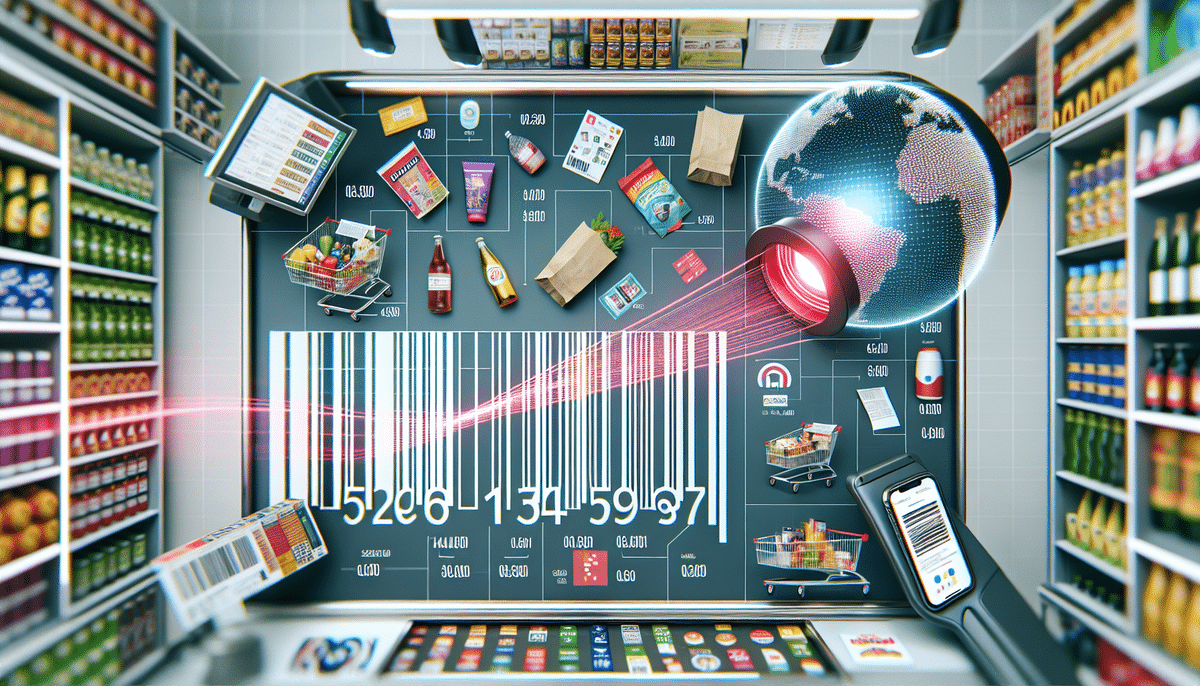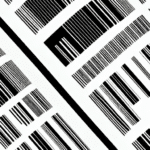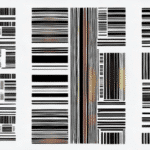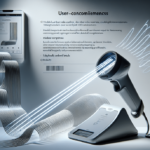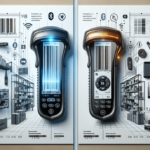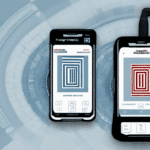What Is a Universal Product Code (UPC) and How Does It Work?
A Universal Product Code (UPC) is a standardized barcode system used primarily in retail and e-commerce industries for tracking inventory and managing sales data. It consists of a unique series of digits that identify specific products. When a UPC is scanned using a barcode scanner, it retrieves the product information from a database, facilitating efficient inventory management and sales tracking.
Why is a UPC Important for Businesses?
UPCs are essential for businesses for several reasons:
- Accurate Inventory and Sales Tracking: Businesses can monitor stock levels and identify top-selling products, enabling informed restocking and marketing decisions.
- Global Recognition: UPCs are universally recognized, allowing seamless use across different markets without the need for multiple codes, reducing time and labeling costs.
- Integration with E-commerce Platforms: As e-commerce grows, UPCs ensure smooth transactions by integrating with various online platforms and marketplaces.
Additionally, implementing a UPC system reduces human error and increases operational efficiency by automating inventory and sales processes. This allows businesses to allocate resources more effectively and focus on strategic growth areas.
From a customer perspective, UPCs enhance the shopping experience by providing accurate product information. Customers can scan UPCs with smartphones to access details such as specifications, pricing, and reviews, fostering trust and loyalty, ultimately boosting sales and revenue.
According to a GS1 report, businesses that effectively utilize UPC systems report up to a 30% improvement in inventory accuracy and a significant reduction in stockouts.
The History of UPCs and How They Were Developed
The development of UPCs dates back to the early 1970s, driven by the grocery industry's need to automate the checkout process. George Laurer and his team at IBM developed the first UPC barcode system, consisting of a unique series of bars and spaces that could be scanned by a laser. The first product scanned was Wrigley’s gum in 1974, marking the beginning of revolutionizing retail operations.
Since their inception, UPCs have become the standard for product identification in the retail sector. By providing retailers with detailed sales data, UPCs have enabled better inventory management, marketing strategies, and the implementation of customer loyalty programs. This data-driven approach has significantly enhanced the efficiency and profitability of retailers worldwide.
Over the decades, UPC technology has continuously evolved, adapting to the growing demands of global trade and the expanding needs of different industries beyond retail, including healthcare and automotive sectors.
Different Types of UPCs and Their Applications
There are primarily two types of UPCs:
- UPC-A: The most common type, consisting of 12 digits, used widely in retail stores and warehouses.
- UPC-E: A compressed version containing 6 digits, designed for small products where space is limited.
UPCs are versatile and can be applied across various settings:
- Retail Stores: Scanned at point-of-sale to record sales data and manage inventory efficiently.
- Warehouses: Track inventory levels and monitor stock movements, ensuring accurate stock management.
- E-commerce Platforms: Match products with online listings, simplifying product discovery and purchase processes.
Moreover, UPCs are increasingly used in supply chain management to streamline product tracking from manufacturers to consumers.
The Anatomy of a UPC: Breaking Down the Code
A UPC is composed of a series of bars and spaces that represent specific numbers. The structure of a standard UPC-A code includes:
- Manufacturer Code: The first six digits identify the manufacturer.
- Product Number: The following five digits specify the product.
- Check Digit: The final digit is a check digit calculated using a specific algorithm to ensure the UPC's validity.
UPCs are not limited to retail products; they are also used in industries like healthcare, where the National Drug Code (NDC) system utilizes UPCs to identify prescription drugs.
With the expansion of global trade, the Global Trade Item Number (GTIN) was introduced, allowing up to 14 digits to identify products at a more granular level, such as different sizes or colors.
How to Read a UPC and What Information It Provides
To read a UPC, a barcode scanner interprets the bars and spaces, translating them into numerical data that retrieves product information from a database. The information provided by a UPC includes:
- Product Name
- Manufacturer
- Price
- Inventory Status
Beyond retail, UPCs are utilized in healthcare to track medical devices and medications, aiding in preventing medication errors and ensuring accurate patient treatment.
Modern UPCs vary in length, now encompassing 8, 12, 13, and 14-digit codes, allowing for more detailed product information, such as country of origin and product weight.
Benefits of Using UPCs for Inventory Management
- Accurate Tracking: Precise monitoring of inventory and sales data enables better decision-making regarding stock levels and product performance.
- Error Reduction: Automation through barcode scanning minimizes manual data entry errors, ensuring inventory accuracy and preventing stockouts or overstocking.
- Enhanced Customer Service: Reliable inventory data allows businesses to quickly locate products and provide up-to-date availability information, improving customer satisfaction and loyalty.
According to industry studies, businesses leveraging UPC systems see up to a 30% reduction in inventory errors and a 20% increase in operational efficiency.
How to Obtain a UPC for Your Product
To obtain a UPC, businesses must register with GS1 US, the organization managing the UPC system in the United States. The process involves:
- Become a GS1 US Member: Join GS1 US to receive a unique company prefix.
- Assign Product Numbers: Use the company prefix to assign unique product numbers to each product variation.
- Generate UPCs: Combine the manufacturer code with the product number and calculate the check digit to create the UPC.
Each product variation, such as different sizes or colors, requires a unique UPC. For international sales, separate UPCs may be necessary for each target country, so it's essential to research specific country requirements before application.
UPC vs EAN: Understanding the Difference
UPC (Universal Product Code) and EAN (European Article Number) are both barcode systems used for product identification. The primary differences between them include:
- Code Length: UPC-A codes have 12 digits, while EAN-13 codes have 13 digits.
- Geographical Use: UPC is predominantly used in the United States, whereas EAN is used globally.
- Compressed Versions: UPC-E is a 6-digit compressed version of UPC-A for smaller products.
Both systems serve similar purposes but cater to different regional and product size requirements, facilitating global trade and product tracking.
Common Misconceptions About UPCs Debunked
- Misconception: UPCs include pricing information.
- Correction: UPCs only contain product identification data; pricing can vary based on retailer and location.
- Misconception: UPCs are only used in retail.
- Correction: UPCs are also employed in other industries such as healthcare and government for various tracking purposes.
The Future of UPCs in Retail and E-commerce
With the continued growth of e-commerce, UPCs will remain a vital component of the industry. Future advancements may include deeper integration with e-commerce platforms, enabling faster and more seamless transactions. Additionally, the shift towards mobile scanning could potentially replace traditional barcode scanners in retail environments, enhancing flexibility and customer interaction.
Emerging technologies such as RFID and QR codes might also complement UPCs, providing even more detailed product information and tracking capabilities.
Case Studies: Businesses That Have Successfully Implemented UPCs
Many businesses have benefited from implementing UPCs, experiencing improvements in inventory management and sales performance:
- Apparel Wholesaler: By integrating UPCs into their inventory system, the wholesaler saw a 20% increase in sales and a 30% reduction in stockouts.
- Grocery Store Chain: Implementing UPCs for inventory tracking and waste reduction led to a 10% increase in revenue and a 25% decrease in food waste.
These case studies highlight the tangible benefits of adopting UPC systems for various business operations.
Troubleshooting Common Issues with UPCs
Common issues related to UPCs include:
- Incorrect Labeling: Ensure labels adhere to GS1 standards to prevent scanning errors.
- Duplication of Codes: Use unique UPCs for each product to avoid confusion and tracking inaccuracies.
- Unreadable Barcodes: Maintain high-quality printing and protect barcodes from damage to ensure readability.
Regular maintenance of barcode scanners and adherence to labeling standards can mitigate these issues and ensure smooth UPC operations.
Tips for Optimizing Your Use of UPCs in Your Business
- Proper Labeling: Follow GS1 labeling standards to ensure barcode quality and readability.
- Accurate Data Tracking: Implement reliable systems for tracking sales and inventory data through UPCs.
- Regular Maintenance: Keep barcode scanners and database systems updated to prevent scanning errors.
- Integration with E-commerce Platforms: Link UPCs with your e-commerce platform to streamline the checkout process and reduce errors.
By following these tips, businesses can maximize the effectiveness of their UPC systems, leading to enhanced operational efficiency and customer satisfaction.
Frequently Asked Questions About Universal Product Codes (UPCs)
Are UPCs mandatory for all products?
No, UPCs are not mandatory for all products, but they are highly recommended for efficient tracking and inventory management purposes.
Can I reuse a UPC for a different product?
No, each product must have a unique UPC. Reusing a UPC for different products can cause confusion and lead to tracking errors in inventory and sales data.
How long does it take to obtain a UPC?
Typically, obtaining a UPC takes a few days after becoming a member of GS1 US and applying for a company prefix.
Can I generate my own UPC?
No, UPCs can only be generated by GS1 US members who have a unique company prefix. Generating your own UPC without registration is not permitted.
Can I manually enter a UPC instead of scanning it?
Yes, you can manually enter a UPC, but this method is prone to errors and is less efficient. Scanning the UPC with a barcode scanner is the recommended and most accurate method.













